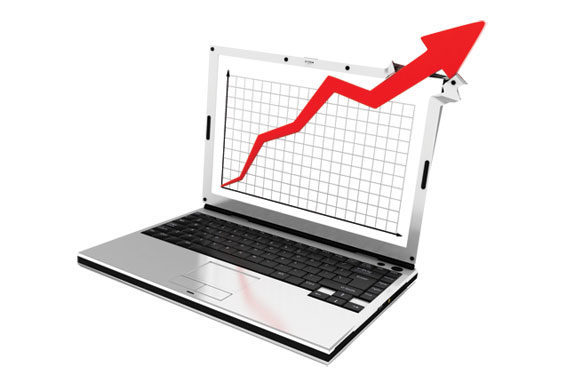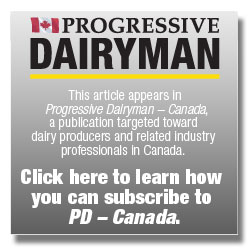The old adage of farming being a “way of life” no longer rings completely true. Farming is very much a business these days, much like any manufacturing or service industry in town. Even the smallest dairy operations can show assets in excess of $1 million, as milk quota, in many cases with this size of unit, is the main contributor to the farm balance sheet.
What small business in town could afford not to know their financial position at any specified time?
It is very important that the accounting and recordkeeping in any business is current. Whether the “books” are done by a family member or an outside source, the owner/manager should be using the up-to-date information on which to base the decision-making.
It could be a pre-paid expense for crop inputs or a small capital investment that is planned; the current financial position will indicate the availability of cash to justify such a decision.
The lender may well ask for the current business position before discussing further loans for a cattle purchase or for a longer-term capital investment.
The chequing account does not always tell the whole story, as trade debt could be accumulating unbeknownst to the lender. Machinery loans through an equipment dealer may have been recently arranged.
Cash accounting is generally quite adequate for most farm businesses, but where the cash flow is a problem and trade debt is used as an additional cash source, accrual accounting would be the preference.
This form of sourcing extra cash should only be used as a short-term measure as in time, of course, the higher interest rates associated with this form of debt become burdensome to the business.
So to maintain a healthy business it is necessary to optimize the cash flow by ensuring the quota allocation is filled to the maximum for as much of the time as possible.
The quota credit system does give the producer some flexibility in matching production to the calving pattern and is more accommodating in some provinces than others.
There will be some people who are still piling all their papers into a shoebox and delivering that on a monthly basis to the accountant’s office.
This can work but may be the most expensive option and likely means the producer is not fully in touch with the real numbers.
Some businesses continue to use a ledger, which can work perfectly well and is not something to be condemned, but I have found that those who have eventually moved over to an accounting software program on the computer would not go back to a manual system.
There are courses for specific agricultural software programs with setup and full instructional training and these come with the full payroll facility, which is another major benefit.
More and more businesses are investing in accounting software programs that enables the producer to look at reports that will give a partial or complete analysis of the business at any given time.
In the dairy enterprise specifically, a regular check on the purchased feed expense and the milk revenue will give a good indicator of the current level of operational profit.
There are many other expenses, of course, such as vet, breeding and dairy supplies, as well as hoof care and DHI, but the purchased feed cost is by far the highest operational expense and represents about 35 percent of the variable costs.
The way the software program is set up will determine how useful the system is in decision-making. I feel it is very important that the chart of accounts contains a full list of all the categories of expense, so the items can be separated out properly.
For instance, our benchmarking clients are asked to separate out drugs from the vet that are used in breeding programs. They may be purchased from the vet, but they are definitely a breeding expense, as is the semen and the technician’s fee, if one is used.
Breaking up the repairs into several categories could help determine when a piece of equipment needs replacing.
As far as the level of expense is concerned, it is worth noting the Operating Expense Ratio (OER). This is derived from the operating expenses divided by the total revenue.
It is very worthwhile to keep a check on this, which can be affected by the level of revenue as well as the expense total. Here again is another reason for maximizing the cash flow by filling quota as close to 100 percent as possible.
So, having dealt with some of the reasons why it is necessary to keep the books updated, I make a point of encouraging those producers who struggle with the accounting side of the business to employ a bookkeeper.
If the management team considers their time in the barn to be much more valuable than sitting in the office, then this is strongly recommended. Employing a custom operator to harvest the forage and grain crops is a similar situation.
Many producers hire a professional hoof care specialist to look after that side of things. Employing a bookkeeper should be considered in the same light.
You are bringing in a professional to complete a task that does not fall within your level of expertise. Where there is a team of owners/managers, farm accounting completed by a professional bookkeeper may even be considered to have more credibility.
Their monthly visit to the farm will ensure the task is completed efficiently and maintains that current aspect of accounting. On completion of the visit, they will then print off as many reports as they feel are useful to the producer, or as requested.
As a manager, the producer should go through those reports with the bookkeeper to acquaint himself with the information, using this opportunity to evaluate and maybe act upon any upward trend of expense. At year-end, the file can be handed over to the accountant for tax preparation purposes.
The bookkeeper is leaving you a detailed management report, whereas the accountant prepares you a report for tax purposes. There is a big difference when it comes to using the information to make management decisions.
Inventories are at the top of the list for other records that need to be maintained. Keeping a regular inventory of cattle numbers, forage, purchased feed, supplies and cash crops means the business can produce an up-to-date and meaningful balance sheet at the push of a button.
This would likely be required if the producer was seeking further long-term loans with the lender.
Farming, like any other business, is based on profitability. This message will have been heard before: What you can’t measure, you can’t manage.
The business model suggests the manager measure several different ways before making a decision. The wrong way would be to make the decision and then see if it works. PD
Roger Mills is an independent dairy business consultant from Steinbach, Manitoba, and is currently national chair of the Canadian Association of Farm Advisors.
PHOTO:
TOP RIGHT: Farming, like any other business, is based on profitability. This message will have been heard before: What you can’t measure, you can’t manage. Photo courtesy ThinkStock.com








